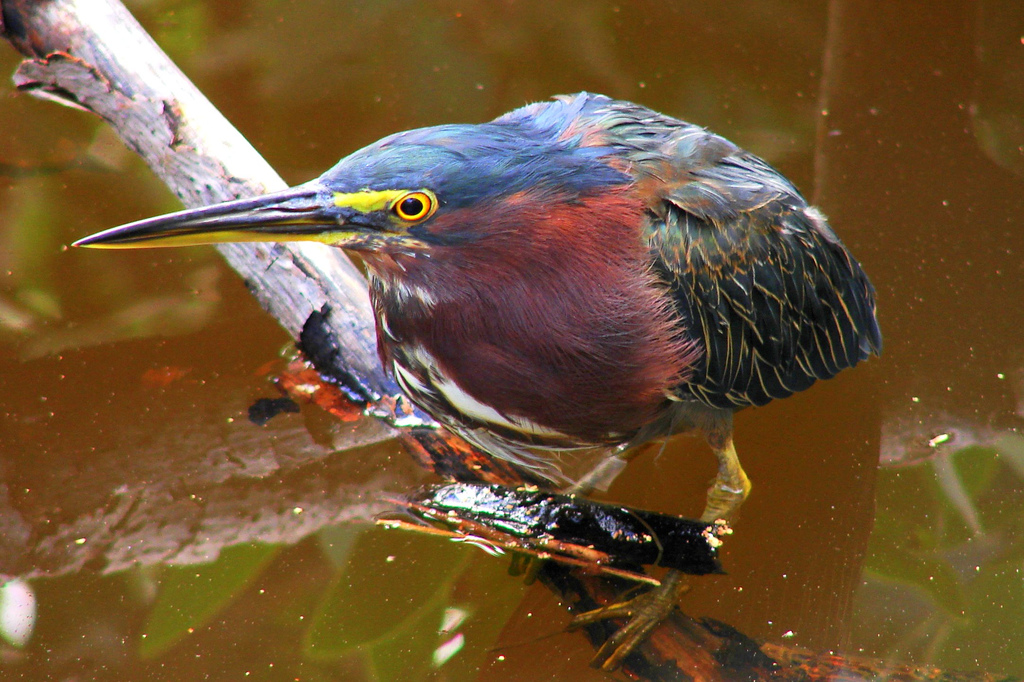Green Heron
The green heron (Butorides virescens) is a small heron of North and Central America. It was long considered conspecific with its sister species the striated heron (Butorides striata), and together they were called "green-backed heron". Birds of the nominate subspecies (no matter which taxonomic arrangement is preferred) are extremely rare vagrants to western Europe; individuals from the Pacific coast of North America may similarly stray as far as Hawaii.
The green heron is relatively small; adult body length is about 44 cm (17 in). The neck is often pulled in tight against the body. Adults have a glossy, greenish-black cap, a greenish back and wings that are grey-black grading into green or blue, a chestnut neck with a white line down the front, grey underparts and short yellow legs. The bill is dark with a long, sharp point. Female adults tend to be smaller than males, and have duller and lighter plumage, particularly in the breeding season. Juveniles are duller, with the head sides, neck and underparts streaked brown and white, tan-splotched back and wing coverts, and greenish-yellow legs and bill. Hatchlings are covered in down feathers, light grey above, and white on the belly.
The green heron's call is a loud and sudden kyow; it also makes a series of more subdued kuk calls. During courtship, the male gives a raah-rahh call with wide-open bill, makes noisy wingbeats and whoom-whoom-whoom calls in flight, and sometimes calls roo-roo to the female before landing again. While sitting, an aaroo-aaroo courtship call is also given.



